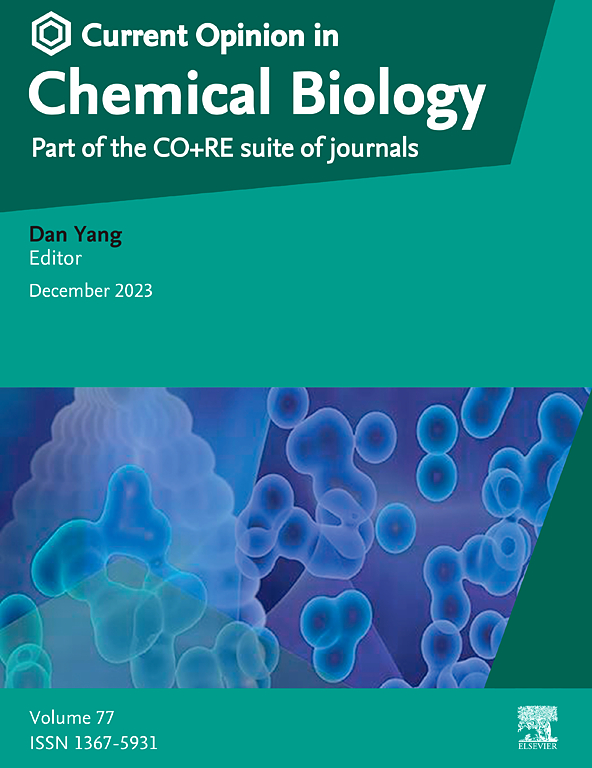通过自旋标记实现膜蛋白结构生物电子顺磁共振波谱。
IF 6.1
2区 生物学
Q1 BIOCHEMISTRY & MOLECULAR BIOLOGY
引用次数: 0
摘要
脉冲偶极电子顺磁共振波谱(PDS)与定点自旋标记相结合,是研究生物大分子的有力工具,是结构生物学研究的重要手段。PDS越来越多地被应用于研究高度复杂的整体膜蛋白系统,如机械敏感离子通道、转运体、g蛋白偶联受体、离子泵和外膜蛋白,以阐明它们的动力学和揭示构象集合。事实上,PDS提供了一个研究中间或低密度态的平台,否则其他现代方法是看不见的,如x射线晶体学,低温电子显微镜和氢-氘交换质谱法。重要的是,自旋标记策略的进步迎来了近天然或细胞内条件下膜蛋白研究的新时代。在这里,我们回顾了最近的整体膜蛋白PDS应用,并强调了适合的,新兴的自旋标记策略,显示出未来研究的希望。本文章由计算机程序翻译,如有差异,请以英文原文为准。
Enabling structural biological electron paramagnetic resonance spectroscopy in membrane proteins through spin labelling
Pulsed dipolar electron paramagnetic resonance spectroscopy (PDS), combined with site-directed spin-labelling, represents a powerful tool for the investigation of biomacromolecules, emerging as a keystone approach in structural biology. Increasingly, PDS is applied to study highly complex integral membrane protein systems, such as mechanosensitive ion channels, transporters, G-protein coupled receptors, ion pumps, and outer membrane proteins elucidating their dynamics and revealing conformational ensembles. Indeed, PDS offers a platform to study intermediate or lowly-populated states that are otherwise invisible to other modern methods, such as X-ray crystallography, cryo-EM, and hydrogen-deuterium exchange-mass spectrometry. Importantly, advances in spin labelling strategies welcome a new era of membrane protein investigation under near-native or in-cell conditions. Here, we review recent integral membrane protein PDS applications, and highlight well-suited, emerging spin labelling strategies that show promise for future studies.
求助全文
通过发布文献求助,成功后即可免费获取论文全文。
去求助
来源期刊

Current Opinion in Chemical Biology
生物-生化与分子生物学
CiteScore
13.30
自引率
1.30%
发文量
113
审稿时长
74 days
期刊介绍:
COCHBI (Current Opinion in Chemical Biology) is a systematic review journal designed to offer specialists a unique and educational platform. Its goal is to help professionals stay informed about the growing volume of information in the field of Chemical Biology through systematic reviews.
 求助内容:
求助内容: 应助结果提醒方式:
应助结果提醒方式:


